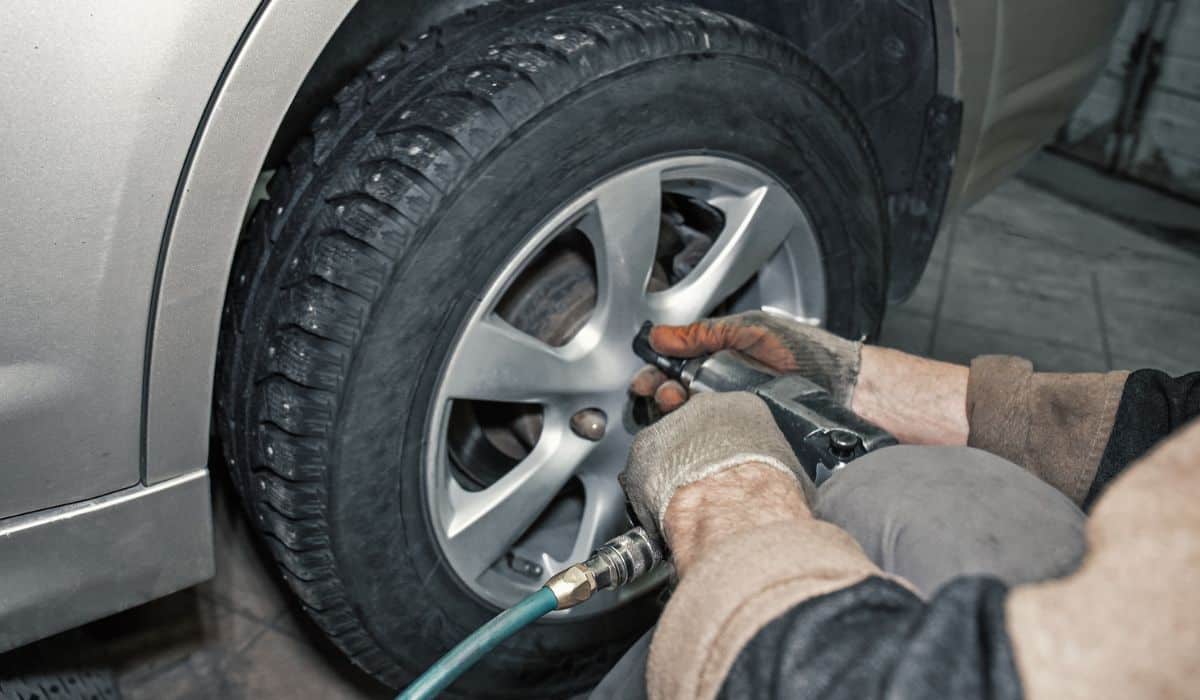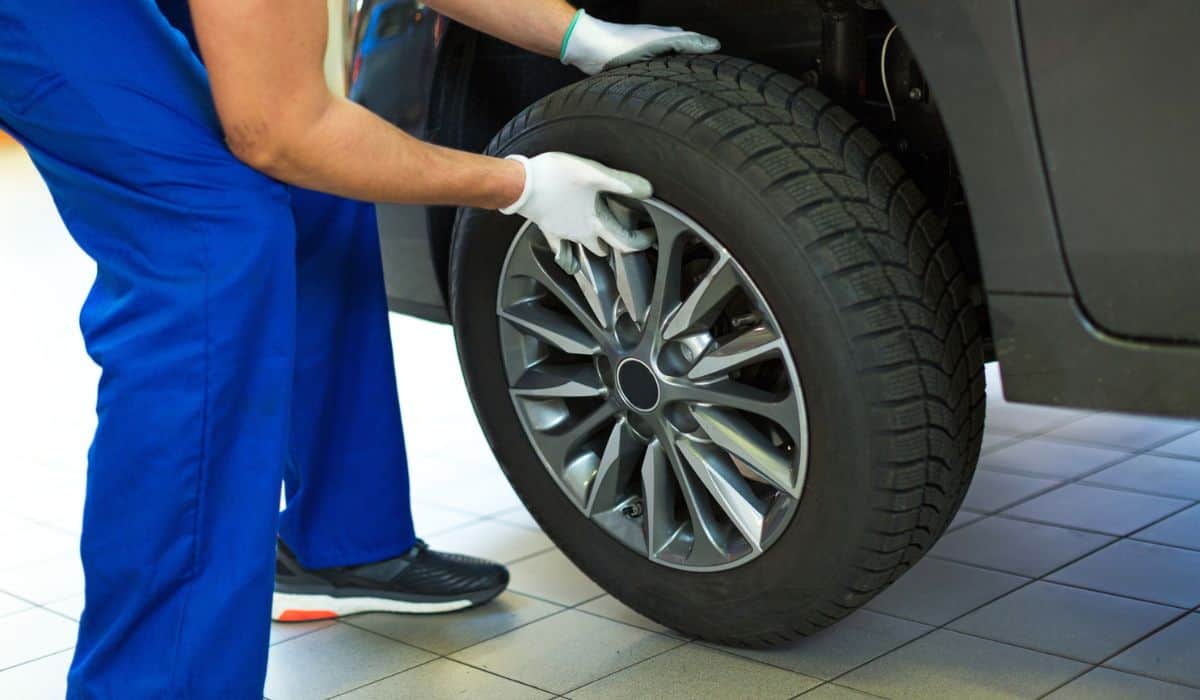Can You Replace The Tires On A Leased Car?
There’s a lot to consider when leasing a vehicle, including the contract length, fees, and how much wear and tear will be tolerated. Noticeable scrapes, dings, and damage will typically accrue additional fees when you return the vehicle — but what about inevitable tire wear? Can you replace tires part way through a lease?
Yes, you can replace tires on a leased car — and it’s often expected that you’ll do so. Some contracts require certain tire brands, types, or sizes, so inspect your lease carefully before proceeding. You might be charged extra fees if you return a vehicle with excessive tire wear.
So, don’t panic if you need to replace your leased vehicle tires and aren’t sure what to do. There’s a lot to consider, but we’ll go over all of the essentials. Let’s dive in!
Can You Replace the Tires on a Leased Car?

Yes, you can replace the tires on a leased vehicle — and it’s generally expected over the contract’s lifespan. Nearly all lease agreements will have a defined range of acceptable wear on the tires when you return the vehicle.
It’s best to consult your lease agreement to determine the acceptable amount of wear and tear before selecting a replacement set of tires.
Some contracts require specific tire brands or levels of quality, while others require you to adhere to the same size and specifications of the Original Equipment (OE).
Returning your vehicle within the acceptable ranges will help you avoid additional costs, while excessive damage may result in steep fees.
What to Know About Replacing the Tires on Your Leased Car
There are a few things to keep in mind when replacing tires on a leased vehicle, including the following:
- Most lease contracts don’t include the exact fees for excessive wear; they’ll be decided when you return the car. Prices vary but can reach upward of $400.
- Ensure you replace the tires with the same size and specifications as the Original Equipment (OE), if your lease agreement requires it. You can find the tire specs on the tires themselves or on the car’s door placard.
- Most leases require you to have a matching set of tires upon return. Some contracts allow the rear and front tires to be different, as long as they match.
- Many contracts don’t require specific tire brands, but it’s best to double-check. If your agreement doesn’t require a particular brand, you can use affordable options to save money.
- Higher-end vehicles typically have stricter requirements regarding replacement tires. Be sure to check your contract ahead of time.
These are the primary considerations when selecting replacement tires for a leased vehicle. You should be able to avoid additional fees if you follow your lease agreement and meet the requirements.
If you aren’t sure about the specifics, consult the lease company or dealership for assistance.
How Long Should Tires on a Leased Car Last?
In most cases, Original Equipment or factory tires will last an entire 24 to 36-month lease. That said, certified pre-owned vehicles might have more wear for starters, and the tires might need to be replaced before the lease ends.
The timeframe will also hinge on the model, manufacturer, brand, driving habits, and other factors.
Most average, all-season tires will last between three and five years, depending on driving habits, location, maintenance, and other factors.
For example, you may need replacement tires if you commute far distances or go on frequent road trips. Some drivers purchase a separate set of winter tires to reduce the wear on the original lease tires. This method can help prevent additional fees upon returning the car.
What Is Acceptable Wear and Tear for Tires on a Leased Car?

It’s evident that cracks in the windshield, tears in the seats, and scuffs to the paint will accrue additional fees on a leased vehicle. But what’s acceptable wear and tear for the tires?
The specified tread depth on lease tires varies depending on the model, manufacturer, and dealer.
Many lease contracts require a tread depth of 4/32 of an inch or more upon return. Your contract might also require that there’s no additional damage that could cause the tires to be unsafe. That said, you’ll need to consult your agreement to determine the specific requirements upon return.
After you find the tread depth requirement, you can measure the tread depth with a tread depth measurement tool (on Amazon) and purchase another set of tires if necessary.
How to Avoid Fees for Excessive Wear and Tear
No one wants additional fees when they return a leased vehicle, but it can be quite difficult to avoid excessive wear on the tires.
Fortunately, there are several steps you can take to avoid additional costs for tire damage, including the following:
- Maintain records of all the maintenance work performed during your lease, especially if you use services outside of the original dealership. Detailed reports will give you proof of any repairs or replacements and may save you additional costs.
- Take note of the acceptable minimum tread depth, condition, and other requirements in your contract.
- When selecting replacement tires, be sure to follow the lease agreement or vehicle guidelines. Your contract might have small details about the brand, size, condition, or other factors that can affect additional costs.
- As we mentioned earlier, some drivers purchase a separate set of winter tires for their leased vehicles. Winter tires are helpful in certain areas and conditions, as they can keep you safe and reduce the wear on the original tires. Be sure to remove the winter tires before returning the vehicle if you decide to go this route.
- It’s best to inspect your tires to determine if you need replacements a couple of months before your lease ends. If you need new tires, you can check with your local tire store for any deals or discounts.
- Always conduct a final inspection before returning your vehicle. The leasing company may want assessments completed by a certified third party. You might want the inspection done on your terms, and they can come to your home if necessary. Conducting the assessment on your terms can help you avoid the unnecessary risks of leaving the vehicle at the dealership or with a third party.
These are a few of the ways you can prevent additional fees when returning your leased vehicle. Essentially, keeping up with maintenance and following your lease agreement are the best ways to avoid unexpected additional costs.
